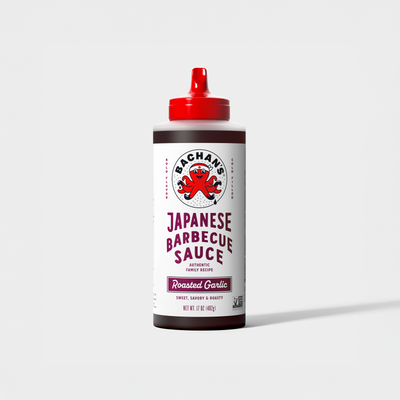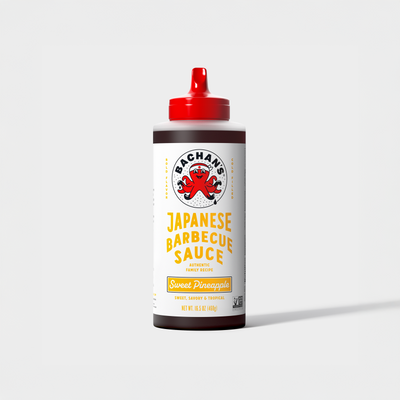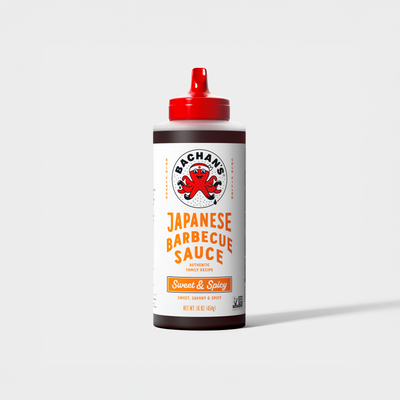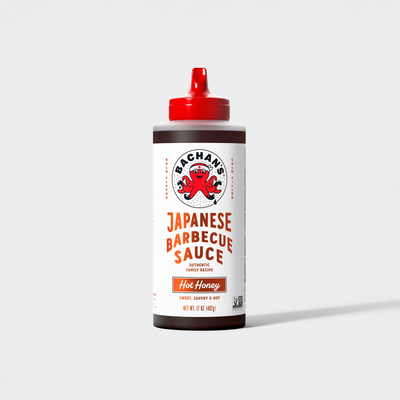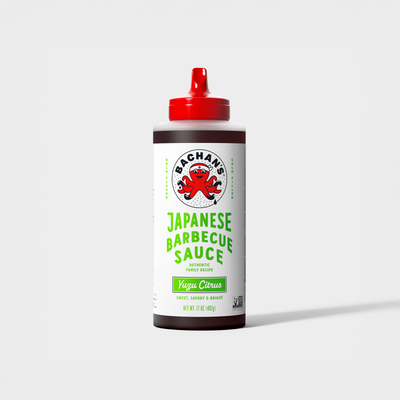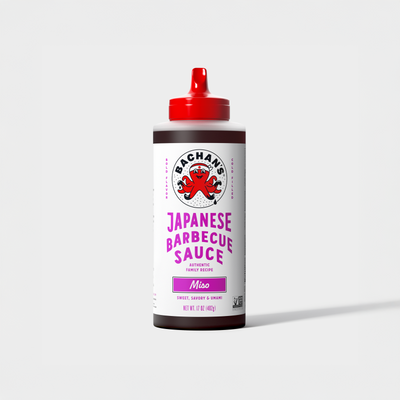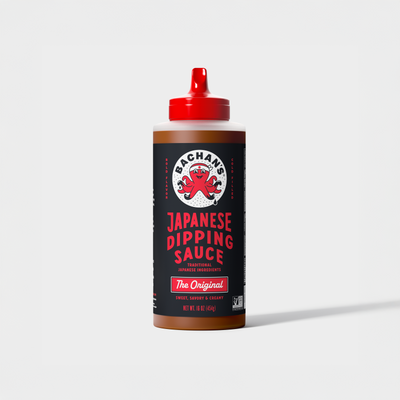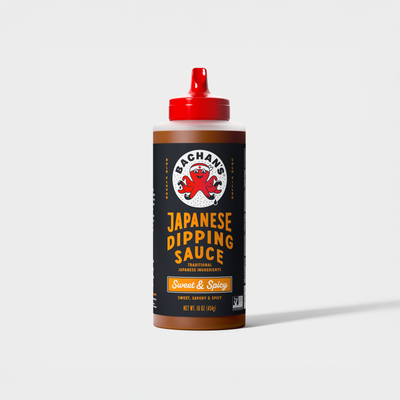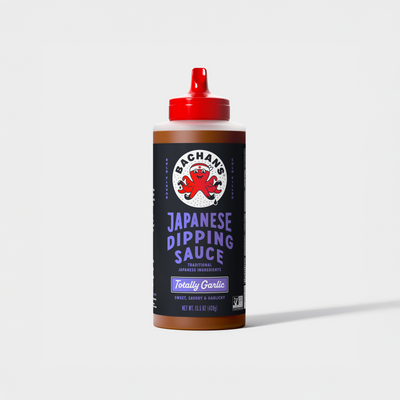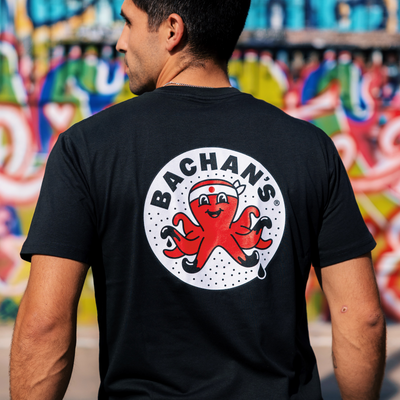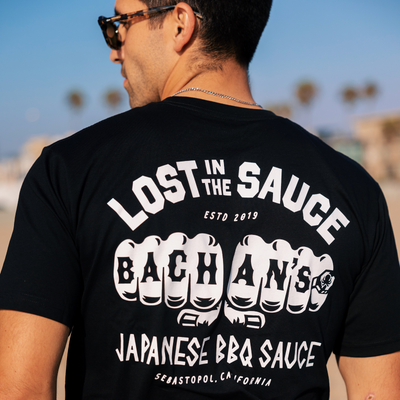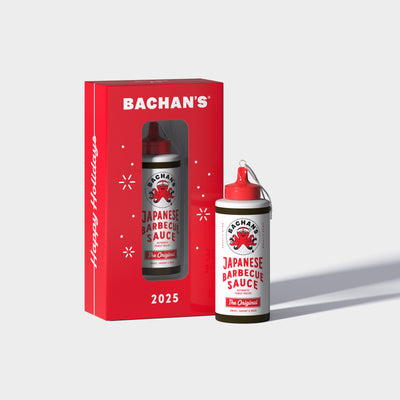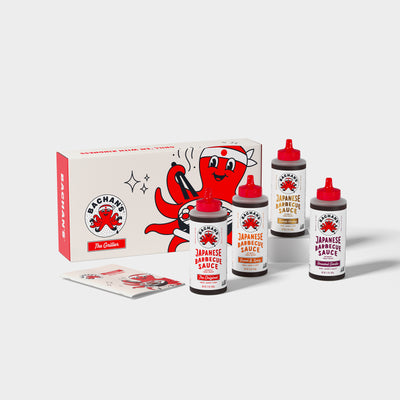Posted by Corey Loftus on
Sweet & Spicy Glazed Ham
- Cook Time: 2.5 Hours
- Serves: 16
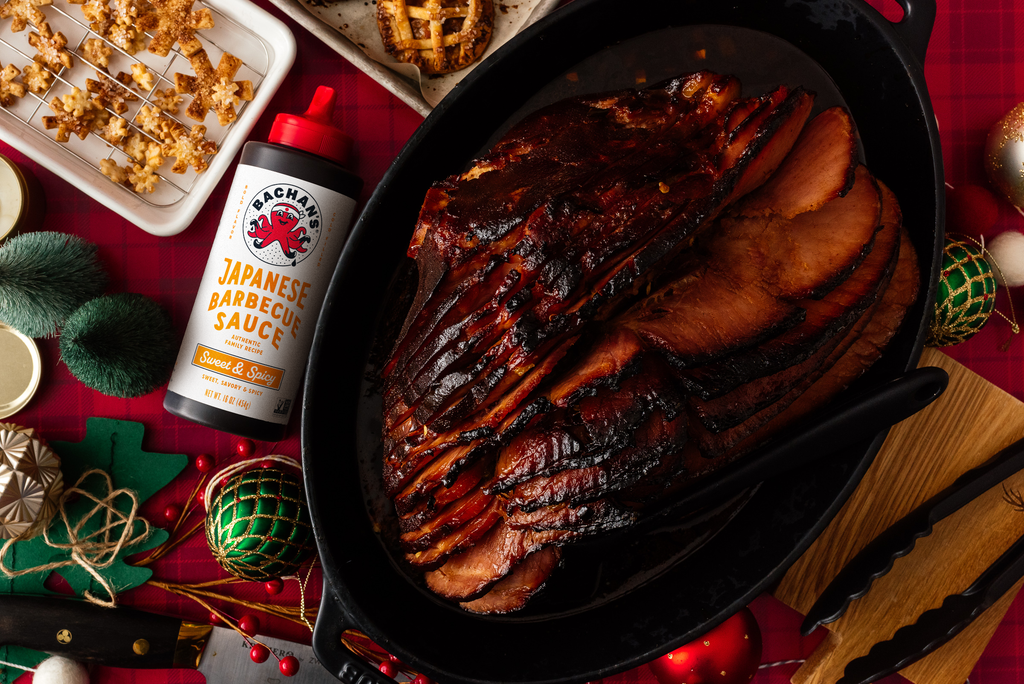
In life, some things simply belong together, like peanut butter and jelly, macaroni and cheese, and Bachan’s Sweet and Spicy Japanese Barbecue Sauce combined with honey and brown sugar to give it a sweet kick. There’s no combination like that of succulent ham soaked and glazed in a sweet-and-spicy sauce that’ll leave your tastebuds feeling like they’re in a candied inferno. Call the fire department.
Sweet and Spicy is Stealing the Show
We really love spicy ham. Things are getting pretty serious between us. And we’re not the only ones.
Maybe you’ve seen hot honey growing in popularity. Mango salsa is making a spot for itself on grocery store shelves. Folks on TikTok went nuts when they discovered cottage cheese with honey and cayenne on top. (We can confirm that it is as good as they claim.)
What is happening to us?
There’s a reason we want it all — both sweet and spicy. First, let’s back up and talk about spicy food for a minute. Technically, “spicy” doesn’t refer to a flavor but rather a sensation. And that sensation is… pain!
Yes. There’s a chemical compound in spicy foods (like peppers) called capsaicin. This is what makes them hot. Your brain detects “heat” even when there is none. Because your body is technically experiencing this spiciness as pain, it releases endorphins, which make you feel good. Other sources of endorphins? Exercise, laughing, meditation, and chocolate.
Yes, you now have a legitimate excuse to eat more chocolate. You’re welcome.
Now, imagine that slightly painful zing and the boost of endorphins combined with a little sweetness. Sugar encourages the body’s production of dopamine, which also makes you feel good.
So, not only do you get an incredible flavor combination, but your body is also having a legitimate physiological response to the food. Brilliant.
Bachan’s Sweet and Spicy Japanese Barbecue Sauce gets its heat from red jalapeño, and then for this spicy ham recipe, we add even more jalapeño, but we balance it out with honey and brown sugar. Your taste buds are going to be confused and perplexed in the best way possible. Trust us.
Japanese Cuisine is Experiencing a Heatwave
We bet you thought that Japanese food isn’t typically spicy.
And you’re right.
Heat hasn’t traditionally been a huge part of Japanese cooking. However, times are changing. Cultures are colliding and Asian chefs are finding inspiration from around the world, quite literally bringing the heat.
Plus, younger generations are having a heavy influence. They’re itching to try new and out-of-the-box foods, especially if they photograph well for Instagram. Kidding! (Not really.)
This is why you might be seeing shichimi togarashi more often on the menu. This is a powdered blend of seven spices, including chili pepper and orange peel. Yuzu kosho is another popular condiment, made from chili peppers and a citrus fruit native to Japan (that’s the yuzu) that’s then turned into a paste.
And let’s not forget that it was Japanese cuisine that brought us wasabi, scorching our mouths and clearing our sinuses for centuries. We can’t get enough of it.
Why Rice Vinegar?
Kind of like olive oil, there are various types of vinegar, one of which is rice vinegar. The earliest use dates back to the 4th and 5th centuries.
Rice vinegar is a popular choice across Asia, and it’s made with fermented rice, which is often prepared by soaking cooked rice and then adding salt. Fun fact: During this process, you end up with sake, which is Japanese rice wine. Wine is always a good idea. Fact.
That wine is then turned into vinegar!
Because of the way it’s prepared, rice vinegar is a bit sweeter than your run-of-the-mill distilled white vinegar. However, it still adds a nice hint of acidity, which is why it’s a common ingredient in marinades and sauces. Don’t be surprised if you find it in a lot of Japanese recipes. It’s a popular flavor balancer and pickling agent (hello, pickled ginger), and we even use it to season our sushi rice.
It doesn’t end there — there are different types of rice vinegar, too! If you can get your hands on any type of rice vinegar, your spicy ham will be a success. And if you can’t find that, you can substitute it for apple cider vinegar or white vinegar, but give the glaze a taste as you mix it, because swapping in a different vinegar could change the flavor a bit.
What’s a Good Side Dish for Spicy Ham?
We know you probably don’t want to make a whole meal out of spicy ham, although if you do, no one here is going to judge you.
If you do want something extra on the side to nibble on, we recommend keeping it light and fresh — veggies are the perfect companion. You can’t go wrong with yuzu roasted mushrooms. Yuzu, that Japanese citrus fruit we mentioned earlier, serves as a flavorful and unique addition to the sweet and spicy ham. A yuzu smashed cucumber salad is another delectable idea. The cold crispness of the cucumber contrasts beautifully with the sizzling heat of the pork.
Or, if the heat of the spicy ham seems to outpace the sweetness of this recipe, opt for something like grilled zucchini steaks, which we recommend preparing with Bachan’s Sweet Honey Barbecue Sauce.
In keeping with Japanese cuisine, wash it all down with a bottle of Calpico or — you had to see this coming — sake. It’s a meal the whole family will enjoy.
Directions
ingredients
• 1/2 cup Bachan's Sweet and Spicy Japanese Barbecue Sauce
• 1/2 cup honey
• 1/2 cup brown sugar
• 1/4 cup unsalted butter
• 2 tbsp rice vinegar
• 2 jalapeños, seeded and diced
• 9 lb bone-in ham (spiral cut optional)
Prep Time: 10 Minutes
Cook Time: 2.5 Hours
Serves: 16


